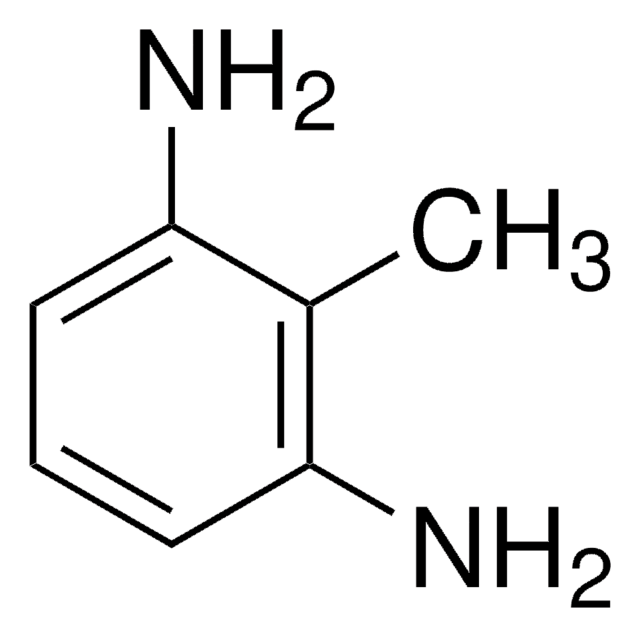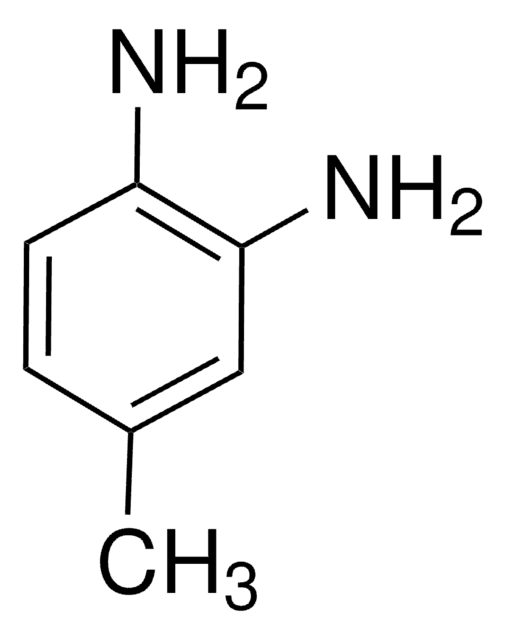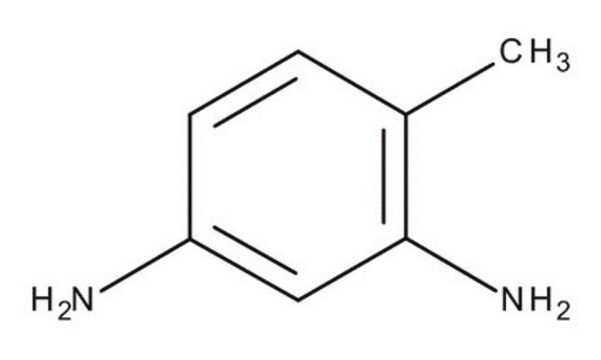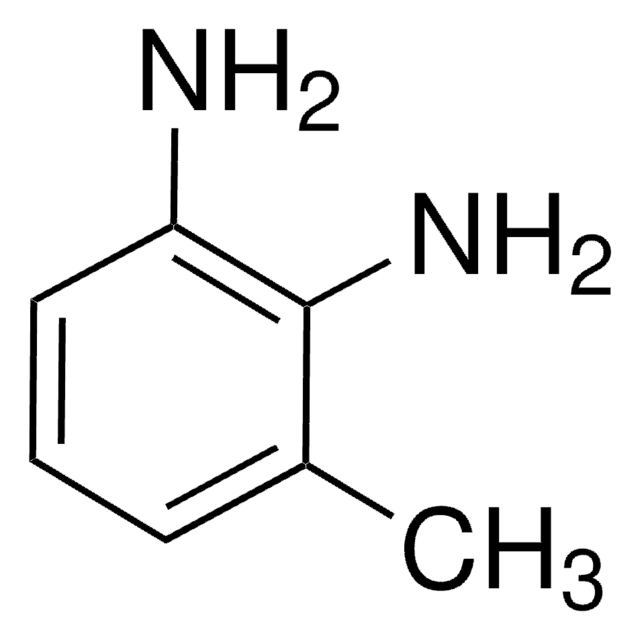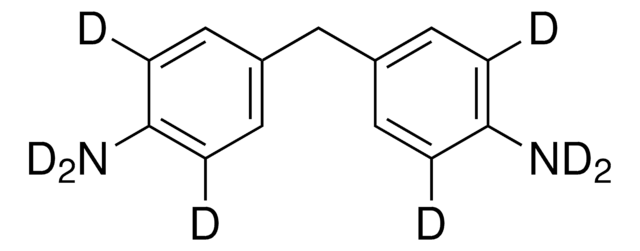Kluczowe dokumenty
101915
2,4-diaminotoluen
98%
Synonim(y):
4-Methyl-m-phenylenediamine, 2,4-Diaminotoluene, 2,4-Toluenediamine, 4-Methyl-1,3-phenylenediamine
About This Item
Polecane produkty
Poziom jakości
Próba
98%
Formularz
solid
bp
283-285 °C (lit.)
mp
97-99 °C (lit.)
ciąg SMILES
Cc1ccc(N)cc1N
InChI
1S/C7H10N2/c1-5-2-3-6(8)4-7(5)9/h2-4H,8-9H2,1H3
Klucz InChI
VOZKAJLKRJDJLL-UHFFFAOYSA-N
Szukasz podobnych produktów? Odwiedź Przewodnik dotyczący porównywania produktów
Powiązane kategorie
Zastosowanie
- Employing UV/H2O2 process for degradation of 2, 4-Diaminotoluene in synthetic wastewater: This study explores the degradation of carcinogenic Toluene-2, 4-diamine in synthetic wastewater using the UV/H2O2 process, highlighting its potential for improving water treatment methods (J Hosseini, A Shokri, 2017).
- Development of magnetic, ferrite supported palladium catalysts for 2, 4-dinitrotoluene hydrogenation: The paper discusses the use of Pd/NiFe2O4 catalyst for efficient hydrogenation of 2,4-dinitrotoluene to 2,4-diaminotoluene, demonstrating a high yield and potential for industrial applications (V Hajdu, M Varga, G Muránszky, G Karacs, 2021).
- Synthesis, characterisation and energetic performance of insensitive energetic salts formed between picric acid and 2, 3-diaminotoluene, 2, 4-diaminotoluene: This paper presents the synthesis and characterization of new energetic materials, which could be significant for the development of safer explosives and pyrotechnic devices (N Şen, H Nazir, N Atҫeken, KS Hope, N Acar, 2020).
Hasło ostrzegawcze
Danger
Zwroty wskazujące rodzaj zagrożenia
Zwroty wskazujące środki ostrożności
Klasyfikacja zagrożeń
Acute Tox. 3 Dermal - Acute Tox. 3 Oral - Aquatic Acute 1 - Aquatic Chronic 2 - Carc. 1B - Muta. 2 - Repr. 2 - Skin Sens. 1 - STOT RE 2
Organy docelowe
Liver,Kidney
Kod klasy składowania
6.1C - Combustible acute toxic Cat.3 / toxic compounds or compounds which causing chronic effects
Klasa zagrożenia wodnego (WGK)
WGK 3
Temperatura zapłonu (°F)
320.0 °F - closed cup
Temperatura zapłonu (°C)
160 °C - closed cup
Środki ochrony indywidualnej
Eyeshields, Faceshields, Gloves, type P3 (EN 143) respirator cartridges
Wykazy regulacyjne
Wykazy regulacyjne dotyczą głównie produktów chemicznych. Można w nich podawać ograniczoną liczbę informacji na temat produktów niechemicznych. Brak wpisu oznacza, że żaden ze składników nie znajduje się w wykazie. Użytkownik odpowiada za zagwarantowanie bezpiecznego i zgodnego z prawem stosowania produktu.
EU REACH SVHC Candidate List
EU REACH Annex XVII (Restriction List)
Wybierz jedną z najnowszych wersji:
Masz już ten produkt?
Dokumenty związane z niedawno zakupionymi produktami zostały zamieszczone w Bibliotece dokumentów.
Protokoły
GC Analysis of Anilines on Equity®-5
Nasz zespół naukowców ma doświadczenie we wszystkich obszarach badań, w tym w naukach przyrodniczych, materiałoznawstwie, syntezie chemicznej, chromatografii, analityce i wielu innych dziedzinach.
Skontaktuj się z zespołem ds. pomocy technicznej